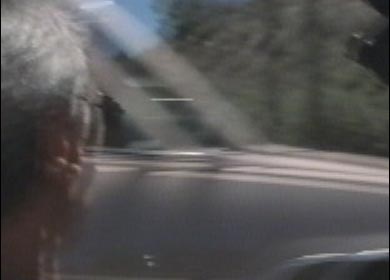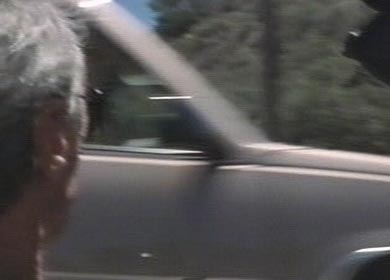Page 1 of 1: Capturing from VHS - Part 2 - Inverse Telecine
INTRODUCTION:What do you think about increasing the quality of your DivX ;) movie-CDs while decreasing the file size? Even more: making the encoding time shorter!! A miracle? No. It is possible (sometimes) with a VirtualDub function that I forgot to mention in my first article (see "Best resolution for capturing from a VHS source", by myself). To be honest, I didn't forget to mention it. I just didn't know it existed. Well, living and learning! That "almost miraculous" resource is called "inverse telecine", and I'll be sharing this experience with you now.
LIMITATIONS:
This article is useful if you are working with a video source that uses the NTSC color system (thus, uses 29.97 frames per second), and that was originally made for the cinema (24 frames per second). Most of the movies you find in your "Blockbuster video store" are included in this category. This is completely useless if you are capturing a TV show, for instance.
I don't know how this applies to PAL movies, which work with 25 frames per second, because all my equipment is NTSC. If I find anything about it, I'll post it as soon as possible.
LEGAL NOTICE:
It's never too much to say that making copies (it doesn't matter the media) of any copyrighted material is illegal, unless you own the copyrights or have an authorization from the copyrights owner. This is specially important in this article, since it deals mostly with the capture of movies first intended to the big screen. Also, I'm not responsible for any problems or damages caused by the information hereby expressed. Proceed at your own risk. If you disagree with any of these, stop reading this guide now. Otherwise, good luck.
PROCEDURE:
Let me go straight to the point: the NTSC video uses 29.97 frames per second. The films intended for the big screen (movie theaters) use 24 frames per second. So, when you put a cinema film into a NTSC cassette, some conversion must be made. How is that made? That's simple: first, the film is slowed down by 0.1 percent, to be at 23.97 frames per second. Then, a new frame is inserted in every block of four frames, resulting in 29.97 frames per second. The problem begins in that "frame insertion". You can't just add a blank frame or repeat a frame, which would make the movie choppy. Thus, the video fields are used. At this point I suppose you know what video fields are. If you don't, this article is not YET for you. Try to learn about video fields and come back later. Here's what is actually done to every block of four frames:
-The first frame is kept untouched.
-The second converted frame is a mix of the first and the second original frames, both separated by the fields, which means that the even field is the first original frame and the odd field is the second original frame.
-The third converted frame is a mix (the same way as above) of the second and third original frames.
-The fourth converted frame is the third original frame.
-The fifth converted frame is the forth original frame.
At the end of all that, what you get is a sequence of frames that goes like this: three non-interlaced frames, then two interlaced frames, then three more non-interlaced frames followed by other two interlaced frames and so on.
Every interlaced frame will be a mix of two actual frames, and in case you have a high motion (a lot of difference between the two original frames that were mixed together), they will look like this:

INTERLACED VIDEO FRAME
Compressing an interlaced video source is a waste of space. Thus, something has to be done. Besides that, you would save 29.97 frames per second of a video that was made at 24 frames per second. That is 25% of completely useless data, because those extra 6 frames per second were not in the original movie!
If you just deinterlace your video before compressing (as I recommended in my previous article - sorry!), you are not getting rid of those extra frames. All you would do is mixing both fields together. The result would look like this:

DEINTERLACED VIDEO FRAME
As you can see from the picture above, both images are still present. I just got rid of the field lines. Besides, by doing this you lose half of your resolution, since the deinterlace process mixes the horizontal lines two by two.
And then there's this function called "inverse telecine", which can be found under the "video/frame rate"
pull down menu in VirtualDub. What it does? When set to "reconstruct from fields - adaptive", it "demixes" the fields of the frames, so that they will be exactly how they
originally were, eliminating one frame in every block of five, giving you the final result of 23.97 frames per second. The frames would then look like this:

INVERSED TELECINE VIDEO FRAME
Notice that no information of the original movie has been lost. It's all there as it should be, and you don't loose any resolution at all! Isn't this enough for you??? What if I say it's even faster than deinterlacing? (This sounds like one of those "Ginsu-Knife-Don't-Delay-Call-Today" TV show!).
To put a 2 hours long movie in a single CD using the simple deinterlace process, I used to use 600 kbits/second with low-motion DivX ;-). Now, after inverse telecine, I use 800 kbits/second and the movie fits the same space. That's 33% more quality! Notice that if you are using "inverse telecine", you don't need to (and you shouldn't) use the deinterlace filter. The "inverse telecine" does it all. Another important point is that you movie must have been captured at 29.97 fps and with both
fields complete. That means 480 of horizontal lines.
SHORTENING IT ALL (THE PRACTICAL GUIDE):
-Capture at 512 x 480 @ 29.97 frames per second. VirtualDub does it, although I strongly recommend "freeVCR", which is a freeware that can be downloaded from "www.downloads.com" (perhaps you guys from divx-digest should try to put it on your downloads section - if it's not already).
-Load you captured movie into VirtualDub and set the resize filter to 512 x 384 with the "precise bicubic" option.
-Go to the "video" menu, then go to "frame rate" and choose "reconstruct from fields - adaptive" in the "inverse telecine" box. DO NOT change the frame rate. "inverse telecine" will do it
automatically.
-For the compression, I recommend DivX :-) low motion @ 800 kbits/second if you want to put a 2 hour movie in a single CD.
-Choose your preferred audio compression (recommended is mpeg layer3).
-Set audio to "full processing mode".
-Go to the "audio" menu, then go to "interleaving". Set the "interleave audio every" to 30 frames.
-Save your work.
-Have fun.
Some further explanation about "inverse telecine" can be found in VirtualDub's help file. Enjoy!
Go to Part 1 : Best Resolution



